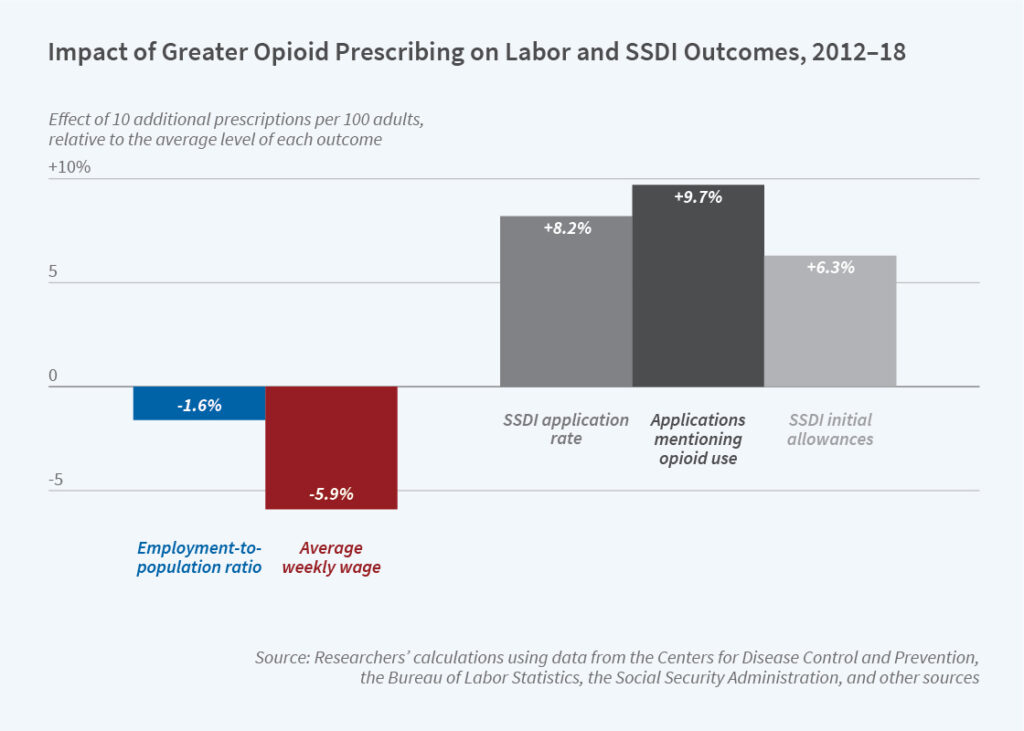How is opioid use trending over time? Among individuals who filed for Social Security Disability Insurance (SSDI), a paper by Maestas et al. (2022) finds that:
…the prevalence of opioid use among SSDI applicants declined from 33 percent in 2013 to 24 percent in 2018. By contrast, the share of applicants reporting musculoskeletal impairments, which are commonly associated with chronic pain, was unchanged during this period.
One key question is whether the use of opioids leads to more or less filing for disability? On the one hand, if opioids help people control chronic pain, they may be able to retain their employment and may avoid filing for disability; on the other hand, opioids are addictive and opioid abuse may increase the likelihood individuals follow for disability. A paper by Maestas and Sherry (2022) looks at this relationship. They use variation in health care providers’ opioid prescribing preferences (e.g., differences in dosage and duration) that are not explained by patient observable patient characteristics. However, this approach assumes that this cross-provider variation in provider prescribing practices is due to differences in physician preferences rather than unobservable (in the data but not to physicians) differences in average pain severity across patients. Despite this limitation, the study finds that:
…in areas with a higher opioid prescribing propensity, employment and wages are lower. Specifically, 10 additional opioid prescriptions per 100 adults in a local area lead to a 1.6 percent decrease in employment and a 6 percent decrease in the average weekly wage, relative to the sample average. Further, an increase of 10 prescriptions per 100 adults is associated with an 8 percent increase in SSDI applications, a 10 percent increase in applications mentioning opioid use, and a 6 percent increase in the probability that an application is allowed at the initial review, relative to mean values.

These studies are summarized in the latest edition of the NBER’s Bulletin on Retirement and Disability.